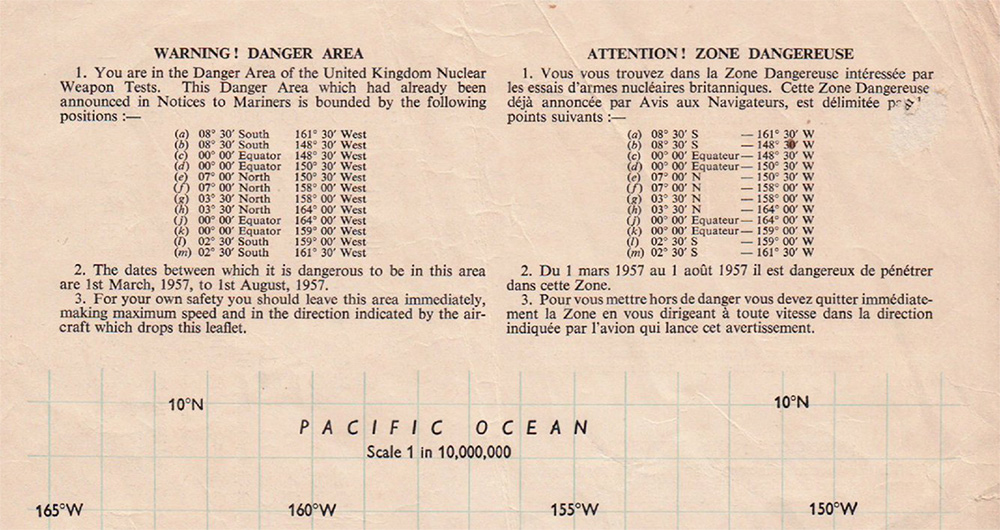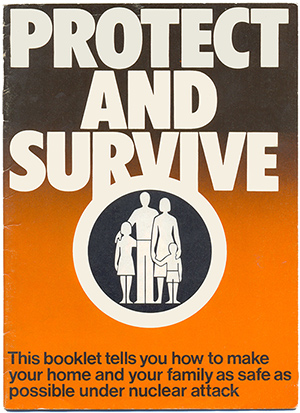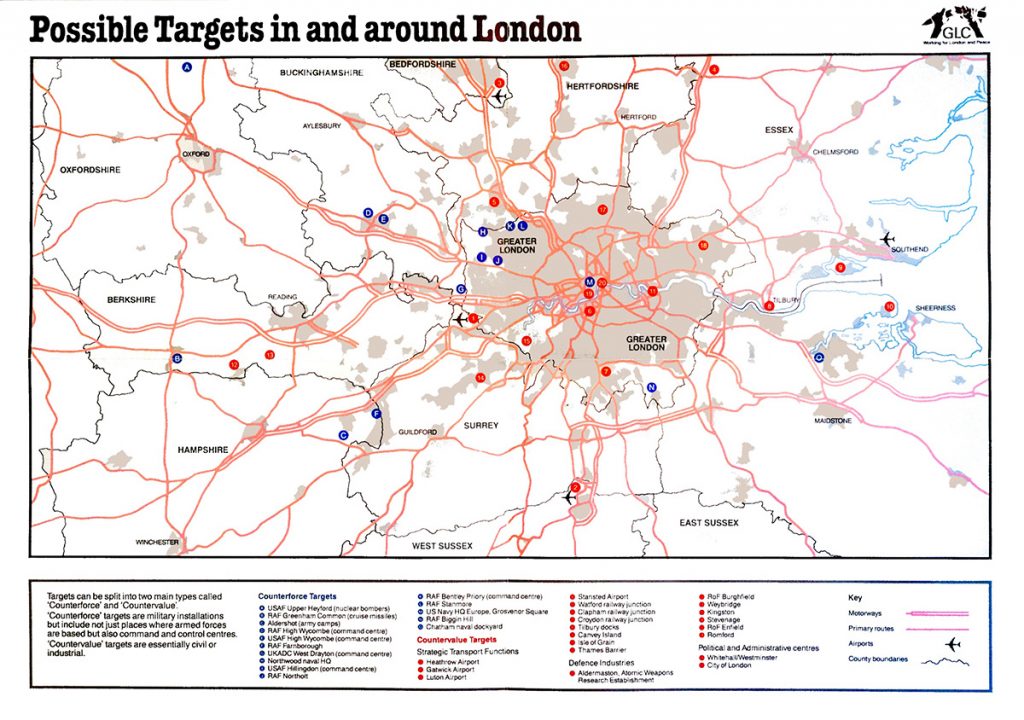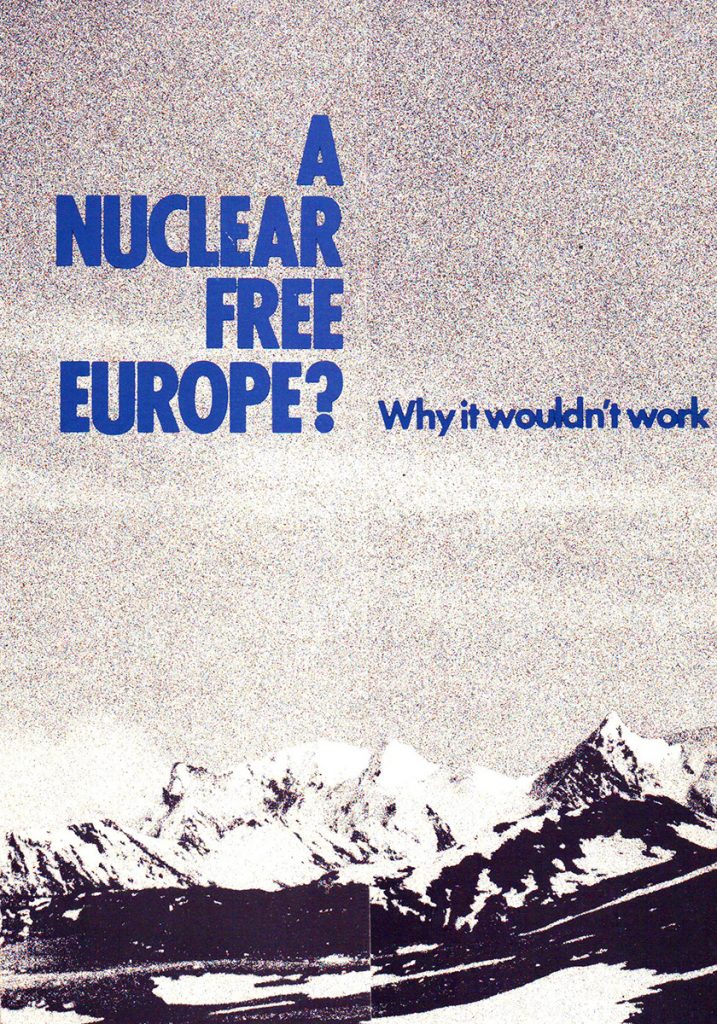For #LondonHistoryDay, here’s a very special map of London.
Public Information
A Nuclear Free Europe?
The line between public information and propaganda can be quite thin, but this little leaflet is pretty solidly in the latter camp.
Published in 1982 by the Ministry of Defence’s Public Relations division, ‘A Nuclear Free Europe?’ set out their view that the call for a Europe free from nuclear weapons was unrealistic.
The cover shows an unidentified cold, grey mountain range – a hint at the reason ‘why it wouldn’t work’ – the subtitle of the leaflet.
The design of the leaflet itself, which opens up from the centre, has quite an impact. It would be reasonable to expect, on opening the cover, to find several detailed arguments inside.
Instead, you’re presented with just one point.
The Ural mountain range, which forms a north-south belt across Russia, traditionally marks the eastern boundary of Europe. Even if the USSR had moved its nuclear weapons to a position technically outside of Europe, most of Europe – including Britain – would still be within range of nuclear attack.
Airdropped leaflet from the Grapple nuclear tests

This is a leaflet produced by the British government in 1957 and intended to be airdropped over the Pacific Ocean.
Unlike most airdropped leaflets, this one isn’t propaganda – it’s a very real warning to get out of the area, or risk being nuked.
Protect and Survive – Creating the Campaign
This first blog post is on one of my pet topics, the myth and reality surrounding the Protect and Survive public information campaign. I’d welcome any feedback, especially if you spot any inaccuracies or omissions – drop me a line on Twitter.
“The average person, if given the choice of being blasted or frizzled on the one hand, or taking his chance of dying a lingering death from fallout on the other, would opt for the latter course every time…” – Home Office memo, 3rd September 1975

Protect and Survive is best known today as a 1980s pamphlet offering advice – bad advice – on protecting your family and property if nuclear weapons were ever used against the UK. Met with ridicule by a sceptical media, and derided in popular culture, Protect and Survive has been become lodged in the popular imagination as an unusual, unsettling and ultimately ineffectual campaign.
Influenced by the media, and reinforced by every retelling, a myth developed around Protect and Survive which has created a distorted, parallel version of the campaign. It has even led to false memories – people who claim they were frightened out of their wits by the pamphlet’s arrival in their letterbox, even though it was never actually distributed like that; people terrified by the broadcast of the animated films on TV (of which only extracts were ever shown). Of course, the myth built up around Protect and Survive is often quite far removed from the reality.


